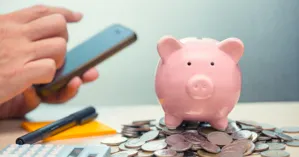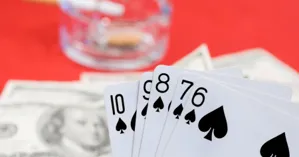
Are you looking to shop engagement rings for that special someone in your life? Getting the best ring for your money is essential when purchasing a perfect engagement ring.
Whether you are buying a wedding ring or just want to own engagement ring in someone's memory, when shopping for a ring, several factors include your budget, what your partner would love, and what makes for a quality ring.
Know what you are shopping for
Before you start shopping, you need to list what is most important to you and what your significant other wants.
Even if you are going for the element of surprise, you should still talk through what would make them the happiest because, ideally, they'll be wearing that ring for the rest of their life.
Getting an idea of what the dream ring is, you can start to plan with the following steps.
-
Set a budget: Before you start shopping for an engagement ring, set a budget that you are comfortable with. This will help you narrow down your choices and avoid overspending.
-
Consider the 4Cs: The 4Cs are carat weight, cut, clarity, and color. These are the key factors that affect the price of a diamond. Determine which of these factors is most important to you and prioritize accordingly. Keep in mind that a diamond with a slightly lower clarity or color grade can still look beautiful to the naked eye.
-
Choose a reputable jeweler: Choose a jeweler with a good reputation and who is transparent about the quality of their diamonds. Look for reviews and ratings online, expertly crafted diamonds for a long time and ensure the jeweler provides a certificate of authenticity for the diamond.
-
Look for sales and discounts: Keep an eye out for sales and discounts that can help you save money. Many jewelers offer promotions during the holidays, such as Valentine's Day and Christmas.
-
Consider alternative gemstones: Diamonds are the traditional choice for engagement rings, but many other beautiful gemstones can be more affordable. Consider options such as sapphires, rubies, and emeralds.
-
Think outside the box: Consider non-traditional engagement rings, such as vintage or antique rings, or rings with alternative designs. These unique engagement rings will be affordable and look sexy as well.
-
Choose a simple setting: A simple setting can be just as beautiful as a more elaborate one and more affordable. Consider a classic solitaire setting or a simple pave setting that showcases the beauty of the diamond.

Image Source: Pixabay
How to spot a quality diamond
From the list above, we briefly explored the 4C's of what to look for in a diamond. To expand on that, you should learn what makes for a quality diamond to ensure you aren't overpaying for a ring that isn't great quality.
To avoid getting duped, here is what to look for when shopping for that sparkler.
The cut of a diamond refers to its proportions, symmetry, and polish, affecting how well the diamond reflects light. A well-cut diamond will have optimal proportions and symmetry and reflect light to maximize its brilliance, fire, and scintillation.
The color of a diamond refers to the absence or presence of color in the stone, and it is graded on a scale from D (colorless) to Z (light yellow or brown). A higher-quality diamond will have less color and will be closer to the colorless end of the scale.
The clarity of a diamond refers to internal and external flaws or inclusions and blemishes. It is graded on a scale from Flawless (no inclusions or blemishes visible under 10x magnification) to Included (inclusions visible to the naked eye). A higher-quality diamond will have fewer inclusions and blemishes and will be closer to the Flawless end of the scale.
The carat weight of a diamond refers to its weight, and it affects the size and price of the diamond. A higher-quality diamond will be larger in size and will have a higher carat weight.
A high-quality diamond will have optimal proportions, symmetry, polish, minimal color and inclusions, and large size. However, the most important factor when choosing a diamond is personal preference and what looks most beautiful to the individual. Shopping at a reputable jeweler is the best way to purchase a ring. Look for a warranty and ask about ring cleaning and repairs too.
Alternative stones
Of course, not everyone wants a diamond. For some, there are ethical reasons why they won't be donning a sparkly diamond. For others, other stones are just more fun. Alternative stones are just as pretty as diamonds and can be a more cost-effective route.
If you're looking for an alternative to diamond engagement ring, many other beautiful gemstones can be used as the centerpiece of your engagement ring or wedding band. Here are some popular options:
-
Moissanite: Moissanite is a lab-created diamond that looks similar to a real and natural diamond but is more affordable. It has a high refractive index, which means it has a lot of sparkle and fire.
-
Sapphire: Sapphires comes in a variety of colorful gemstones, including blue, pink, yellow, and green, and are durable gemstones that can withstand everyday wear. It could be a perfect ring for you with a lower price tag than real diamond.
-
Ruby: Rubies are deep red gemstones that symbolize passion and love. They are also very durable and can withstand daily wear.
-
Emerald: Emeralds are a beautiful green gemstone that symbolizes growth and harmony. They are slightly softer than diamonds, so they may require more care and maintenance.
-
Aquamarine: Aquamarine is a light blue gemstone that symbolizes peace and tranquility. It is a relatively affordable gemstone durable enough for daily wear.
-
Amethyst: Amethyst is a purple gemstone that is associated with calmness and balance. It is a more affordable option and can be used as a center stone or accent stone in a ring.
A ring for everyone
When choosing a ring, consider your budget, the durability of the rock, and your personal style and preferences. Remember, an engagement ring or wedding band is a personal choice that should reflect your unique relationship and love story.
By following these tips, you can get the most value for your budget when purchasing an engagement ring.





